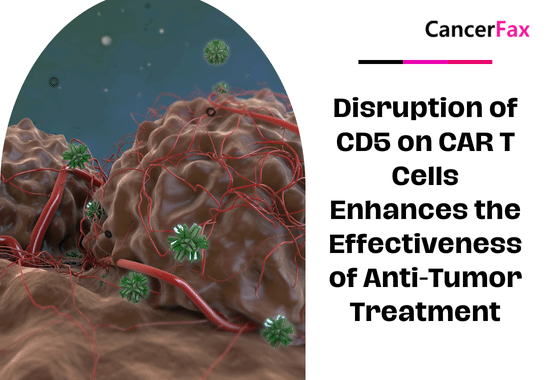Pancreatic Cancer
According to statistics in 2014, the estimated number of new cases of pancreatic cancer in developed countries (the United States) is ranked 10th for men and 9th for women, accounting for the fourth place in mortality from malignant tumors.
Pancreatic cancer is the seventh leading cause of cancer-related deaths worldwide. However, its toll is higher in more developed countries. Reasons for vast differences in mortality rates of pancreatic cancer are not completely clear yet, but it may be due to lack of appropriate diagnosis, treatment and cataloging of cancer cases. Because patients seldom exhibit symptoms until an advanced stage of the disease, pancreatic cancer remains one of the most lethal malignant neoplasms that caused 432,242 new deaths in 2018 (GLOBOCAN 2018 estimates). Globally, 458,918 new cases of pancreatic cancer have been reported in 2018, and 355,317 new cases are estimated to occur until 2040. Despite advancements in the detection and management of pancreatic cancer, the 5-year survival rate still stands at 9% only. To date, the causes of pancreatic carcinoma are still insufficiently known, although certain risk factors have been identified, such as tobacco smoking, diabetes mellitus, obesity, dietary factors, alcohol abuse, age, ethnicity, family history and genetic factors, Helicobacter pylori infection, non-O blood group and chronic pancreatitis. In general population, screening of large groups is not considered useful to detect the disease at its early stage, although newer techniques and the screening of tightly targeted groups (especially of those with family history), are being evaluated. Primary prevention is considered of utmost importance. Up-to-date statistics on pancreatic cancer occurrence and outcome along with a better understanding of the etiology and identifying the causative risk factors are essential for the primary prevention of this disease.
Pancreatic cancer treatment guidelines
Recommendation level: Category1:
Supported by high-level evidence, all experts reach consensus recommendation;
Category2A: Supported by lower-level evidence, all experts reach consensus recommendation;
Category2B: Supported by lower-level evidence, some experts reach consensus recommendation;
Category3: any Supported by grade evidence, there is a big controversy. Unless otherwise marked, this guide is recommended for
Category2A level.
The diagnosis and treatment of pancreatic cancer is recommended to a larger-scale diagnosis and treatment center and carried out in the mode of multidisciplinary team (multidisciplinary team, MDT), including surgery, imaging, endoscopy, pathology, oncology, intervention, radiotherapy and other professionals. Participate and run through the entire process of patient diagnosis and treatment. According to the patient’s basic health status, clinical symptoms, tumor stage and pathological type, jointly formulate a treatment plan, personally apply multi-disciplinary and multiple treatment methods to enable the patient to achieve the best treatment effect. This guideline applies only to malignant tumors (pancreatic cancer) of pancreatic ductal epithelial origin.
Diagnosis and differential diagnosis of pancreatic cancer
Risk factors for pancreatic cancer
Including smoking, obesity, alcoholism, chronic pancreatitis, etc., those exposed to naphthylamine and benzene compounds have a significantly increased risk of pancreatic cancer. Diabetes is one of the risk factors for pancreatic cancer, especially in elderly patients with low body mass index and no family history of diabetes. New type 2 diabetes should be followed up and alert to the possibility of pancreatic cancer.
Pancreatic cancer has a genetic susceptibility. About 10% of pancreatic cancer patients have a genetic background. Patients with hereditary pancreatitis, Peutz-Jeghers syndrome, familial malignant melanoma, and other hereditary tumor disorders have a significant risk of pancreatic cancer increase.
Selection of diagnostic methods
The main symptoms of pancreatic cancer patients include upper abdominal discomfort, weight loss, nausea, jaundice, steatorrhea, and pain, which are not specific. For patients with clinically suspected pancreatic cancer and high-risk groups of pancreatic cancer, noninvasive examination methods should be preferred for screening, such as serological tumor markers, ultrasound, pancreatic CT or MRI. The combined detection of tumor markers and the combination of imaging examination results can increase the positive rate and contribute to the diagnosis and differential diagnosis of pancreatic cancer.
Evaluation criteria for resectable pancreatic cancer
In the MDT mode, the diagnosis and differential diagnosis are completed based on the patient’s age, general condition, clinical symptoms, comorbidities, serological and imaging examination results, and the resecibility of the lesion is evaluated.
Preoperative biliary drainage
Preoperative biliary drainage to relieve obstructive jaundice is controversial in terms of improving the patient’s liver function and reducing the perioperative complication rate and mortality rate. It is not recommended to perform routine biliary drainage before surgery. If the patient has fever and cholangitis and other infections, it is recommended to perform biliary drainage before surgery to control the infection and improve perioperative safety. According to the technical conditions, you can choose endoscopic transduodenal papillary stent or percutaneous transhepatic biliary drainage (PTCD). If the patient intends to undergo neoadjuvant therapy, patients with jaundice should also be placed in a stent to relieve jaundice before treatment. If the endoscope stent is for short-term drainage, it is recommended to insert a plastic stent.
PTCD or endoscopic stent placement can cause related complications. The former can cause bleeding, bile leakage, or infection, and the latter can cause acute pancreatitis or biliary tract infection. It is recommended to complete the above-mentioned diagnosis and treatment in a large-scale diagnosis and treatment center.
Scope of lymph node dissection for radical resection of pancreatic head cancer and pancreatic body and tail cancer
For the lymph node grouping of pancreatic cancer, the literature and guidelines at home and abroad mostly use the grouping of the Japanese Pancreas Society as the naming standard.
Judging criteria for cutting edge
In the past literature, the presence or absence of tumor cells on the surface of the margin was used as a criterion for judging R0 or R1 resection. Based on this standard, there was no statistically significant difference in the prognosis between R0 and R1 resection patients. R0 resection patients still had a higher local recurrence rate. It is recommended to judge whether R0 or R1 resection is based on the presence or absence of tumor infiltration within 1 mm from the cutting edge. If there is tumor cell infiltration within 1 mm from the cutting edge, it is R1 resection; if there is no tumor cell infiltration, it is R0 resection. Taking 1 mm as the judgment principle, the difference between the prognosis of R0 and R1 patients is statistically significant. Due to the anatomical location of pancreatic cancer and the adjacent relationship with the surrounding blood vessels, most patients with pancreatic cancer undergo R1 resection. If the cut edge is judged by the naked eye to be positive, it is R2 resection.
Standardization of pancreaticoduodenectomy specimens
Promote standardized testing of pancreaticoduodenectomy specimens. Under the premise of ensuring the integrity of the specimens, the surgical and pathological physicians cooperate to mark and describe the following cutting edges of the specimens to reflect objectively and accurately Cutting edge state.
Palliative care
The purpose of palliative treatment is to relieve biliary and digestive tract obstruction, improve
the quality of life of patients, and extend the life span. About two-thirds of pancreatic cancer patients have jaundice. For patients with unresectable and obstructive jaundice, pancreatic carcinoma of the duodenum papillary tract is used to relieve jaundice. Stents include metal and plastic stents The application can be selected according to the patient’s expected survival time and economic conditions. Patients with no pathological diagnosis can brush the pancreatic juice for cytological diagnosis. The incidence of blockage of plastic stents and induced cholangitis is higher than that of metal stents, which need to be removed and replaced. Patients with duodenal obstruction who cannot be placed endoscopically into the stent can be percutaneously transhepaticly punctured and placed outside of the catheter, or the drainage tube can be placed into the duodenum through the nipple. Into the duodenum to relieve gastrointestinal obstruction.
Postoperative adjuvant therapy
Postoperative adjuvant chemotherapy for pancreatic cancer has a definite effect in preventing or delaying tumor recurrence. Compared with the control group, it can significantly improve the prognosis of patients and should be actively implemented (Category 1). Postoperative adjuvant chemotherapy is recommended for fluorouracil or gemcitabine monotherapy (Category 1). For patients with good physical fitness, combined chemotherapy can also be considered. Adjuvant therapy should be started as soon as possible, and 6 cycles of chemotherapy are recommended.
Treatment of unresectable locally advanced or metastatic pancreatic cancer
For unresectable locally advanced or metastatic pancreatic cancer, aggressive chemotherapy can help relieve symptoms, prolong survival, and improve quality of life. According to the patient’s physical condition, the options include: gemcitabine monotherapy (Category 1), fluorouracil monotherapy (Category 2B), gemcitabine-fluorouracil drugs (Category 1), gemcitabine + albumin-binding paclitaxel (Category 1), FOLFIRONO Scheme (Category 1), etc. Gemcitabine combined with molecular targeted therapy is also a viable option (Category 1). Those with tumor progression can still use alternative drugs such as oxaliplatin.
Follow-up of pancreatic cancer patients after surgery
Patients after resection should be followed up every 3 to 6 months within 2 years after the operation. Laboratory examinations include tumor markers, blood routine and biochemistry. Imaging examinations include ultrasound, X-ray and abdominal CT (Category) 2B).
Source: Western Cancer Information

